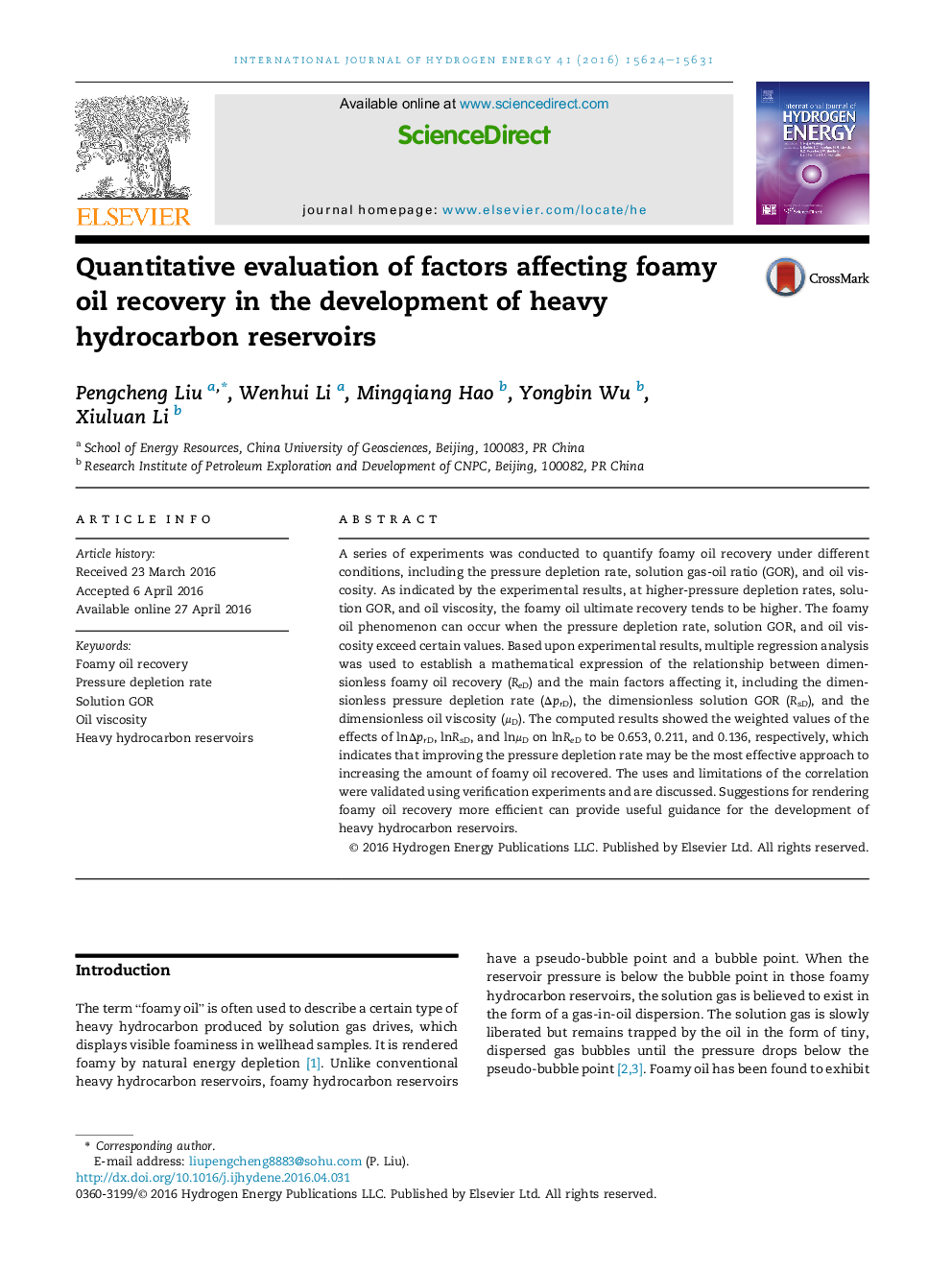| Article ID | Journal | Published Year | Pages | File Type |
|---|---|---|---|---|
| 1270281 | International Journal of Hydrogen Energy | 2016 | 8 Pages |
•The experiments were used to quantify foamy oil recovery under different conditions.•Foamy oil phenomenon can occur when pressure depletion rate, GOR, and viscosity exceed certain values.•The relationship between the dimensionless pressure depletion rate and the main factors was established.•Improving pressure depletion rate may be the most effective way to increasing EOR.
A series of experiments was conducted to quantify foamy oil recovery under different conditions, including the pressure depletion rate, solution gas-oil ratio (GOR), and oil viscosity. As indicated by the experimental results, at higher-pressure depletion rates, solution GOR, and oil viscosity, the foamy oil ultimate recovery tends to be higher. The foamy oil phenomenon can occur when the pressure depletion rate, solution GOR, and oil viscosity exceed certain values. Based upon experimental results, multiple regression analysis was used to establish a mathematical expression of the relationship between dimensionless foamy oil recovery (ReD) and the main factors affecting it, including the dimensionless pressure depletion rate (ΔprD), the dimensionless solution GOR (RsD), and the dimensionless oil viscosity (μD). The computed results showed the weighted values of the effects of lnΔprD, lnRsD, and lnμD on lnReD to be 0.653, 0.211, and 0.136, respectively, which indicates that improving the pressure depletion rate may be the most effective approach to increasing the amount of foamy oil recovered. The uses and limitations of the correlation were validated using verification experiments and are discussed. Suggestions for rendering foamy oil recovery more efficient can provide useful guidance for the development of heavy hydrocarbon reservoirs.
